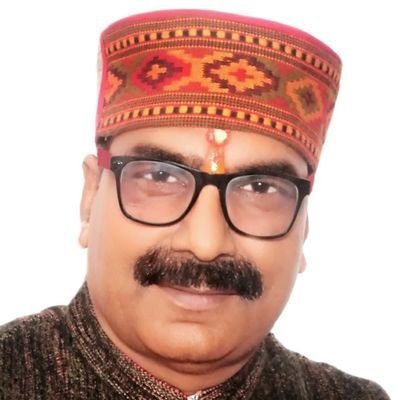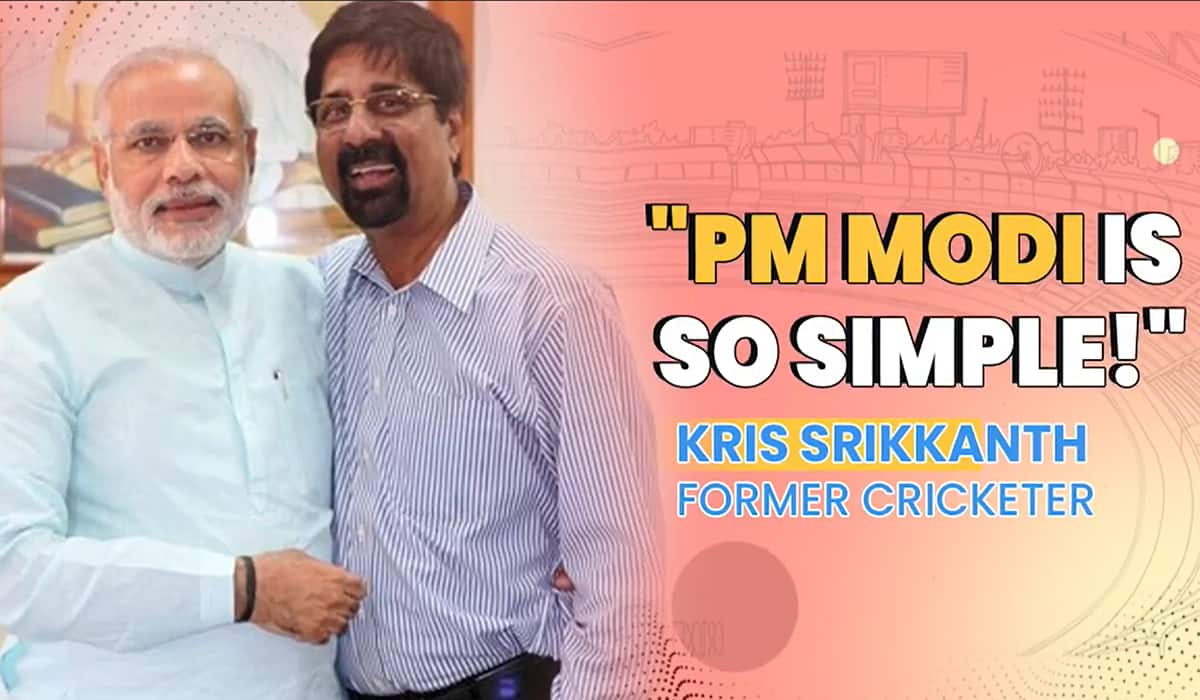Most teenagers at the age of 17 think about their careers and try to enjoy the last remnants of childhood, but for Narendra Modi at that age things were very different. At 17, he made an extraordinary decision, which changed the course of his life. He decided to leave home and travel across India.
His family was shocked but they accepted Narendra’s wish to leave the confines of his small town life. When the day finally dawned for him to leave, his mother prepared a sweet dish that is cooked on special occasions and applied the customary ‘tilak’ (a mark on the forehead).
Among the places that he traveled to includedthe Himalayas (where he stayed at Garudachatti), Ramkrishna Ashram in West Bengal and even the Northeast. These travels left a lasting impression on the youngster. He travelled across the expansive landscape of India exploring the various cultures in various parts of the country. It was also a time of spiritual awakening for him that connected him further to a man he always admired- Swami Vivekananda.
 Narendra Modi’s Childhood
Narendra Modi’s Childhood
The RSS Calls
Narendra came back two years later, but stayed home only for two weeks. This time his destination was fixed and the mission was also clear- he was going to Ahmedabad, determined to work with the Rashtriya Swayamsevak Sangh (RSS). Set up in 1925, the RSS is a socio-cultural organisation working towards the economic, social and cultural regeneration of India.

His first brush with the RSS was at the tender age of eight when he would attend the local youth meetings of the RSS after a day’s work at the family tea stall. The reason for attending such meetings was far from political. It was here that he met one of the strongest influences on his life, Laxmanrao Inamdar also known as ‘Vakil Saheb.’

Narendra Modi during RSS Days
The Road to Ahmedabad and Beyond
With this background, an almost 20-year-old Narendra arrived in Gujarat’s largest city Ahmedabad. He became a regular member of the RSS and his dedication and organisation skills impressed Vakil Saheb and others. In 1972 he became a Pracharak, giving his full time to the RSS. He shared his accommodation with other Pracharaks and followed a rigorous daily routine. The day began at 5:00 am and went on till late night. In the midst of such a hectic routine Narendra completed a degree in political science. He always valued education and learning.
As a Pracharak he had to travel all over Gujarat. Sometime between 1972 and 1973 he stayed at the Santram Mandir in Nadiad, which is a part of Kheda district. In 1973 Narendra Modi was given responsibility of working for a massive summit organised in Siddhpur where he met top leaders of the Sangh.

The atmosphere in Gujarat as well as India was very volatile when Narendra Modi was cutting his teeth as an activist. When he reached Ahmedabad, the city was reeling under one of the worst instances of communal rioting. In the rest of the nation too, the Congress Party, which had already suffered reverses in the 1967 Lok Sabha Elections had spilt between the faction of Mrs Indira Gandhi and the erstwhile syndicate, whose leaders included Morarji Desai from Gujarat. Riding on the wave of a campaign to eradicate poverty, Mrs Gandhi swept back to power in 1971 Lok Sabha elections winning 352 out of 518 seats in the Lok Sabha, the popularly elected chamber of the India Parliament.
In the Gujarat State Elections too Mrs Gandhi replicated the strong performance, winning 140 out of 182 seats and capturing a gigantic voteshare of over 50%.

Narendra Modi – a Pracharak
However the euphoria of the Congress and Mrs. Gandhi faded as quickly as it was created. The dreams of quick reform and progress had given way to disillusionment amongst the common man in Gujarat. The struggles and sacrifices of political stalwarts such as Indulal Yagnik, Jivraj Mehta and Balwant Rai Mehta had been undone by the politics of greed.
By the end of the 1960s and early 1970s, corruption and misgovernance of the Congress government in Gujarat had reached new heights. The grand promise of ‘Garibi Hatao’ turned out to be an empty one as it gradually changed into ‘Garib Hatao’. The condition of the poor worsened, and in Gujarat the misery was compounded with a severe famine and steep price rise. Endless queues for basic commodities had become a common sight in the state. There was no respite for the common man.
Navnirman Movement: Youth Power
People’s discontent converted into public expressions of anger when in December 1973, a few students of an Engineering College in Morbi (Gujarat) protested against the exorbitant rise in their food bills. Similar protests began to take place across the state of Gujarat. These protests soon gained widespread support and ignited a state wide mass movement against the government, known as the Navnirman Movement.
Narendra Modi was drawn to the mass movement that attracted all sections of society. The movement further strengthened when it gained the support of Jayaprakash Narayan, a well-respected public figure and a known crusader against corruption. When Jayaprakash Narayan came to Ahmedabad, Narendra had the unique opportunity to meet the JP himself. The several talks held by the veteran and other leaders left a strong impression on young Narendra.

The historic Navnirman Movement
Eventually student power won and the incumbent Congress Chief Minister had to resign. The joy however was short-lived. The dark clouds of authoritarianism struck on the midnight of 25th June 1975 when Prime Minister Mrs Indira Gandhi declared a state of Emergency.
The Dark Days of the Emergency
Mrs Gandhi feared she would lose her top post in the wake of an adverse court judgment that nullified the elections, and thought the Emergency was the best step at that point. Democracy was under siege, freedom of speech curtailed and the leading lights of the opposition Shri Atal Bihari Vajpayee, Shri LK Advani, Shri George Fernandes to Shri Morarji Desai were arrested.

Narendra Modi during Emergency
Narendra Modi was at the core of the anti-Emergency movement. He was a part of the Gujarat Lok Sangharsh Samiti (GLSS) that was formed to resist tyranny. He rose to become the General Secretary of GLSS, where his primary role was to coordinate between the activists across the state. This was tough considering the strict surveillance anti-Congress leaders and activists were subjected to.
There are several stories about Narendra Modi’s work during the Emergency. One of them was how he rode a scooter and took a wanted senior RSS figure to a safe house. Similarly, it emerged that one of the leaders who was arrested was carrying his papers with him at the time of the arrest. The papers had to be retrieved at any cost. It fell on Narendra Modi to ensure that the paper was duly retrieved from the police station where the leader was being held and that too in front of police force! When Nanaji Deshmukh was arrested, he had with him a book containing the addresses of sympathizers. Narendra Modi ensured that each and everyone was removed to safer locations so that nobody was arrested.
Among Narendra Modi’s other responsibilities were to make travel arrangements for anti-Emergency activists to and from Gujarat. Sometimes his work meant that he had to move in disguise so that he was not recognized - he would be a Sikh gentleman one day and an elderly man with a beard the next.

One of Narendra Modi’s most cherished experiences of the Emergency days was that he got to work with leaders and activists from different parties. Narendra Modi wrote on his blog on June 2013:
For youngsters like me, the Emergency gave a wonderful opportunity to work with a wide spectrum of leaders and organisations that were fighting for the same goal. It enabled us to work beyond institutions we had been brought up with. From stalwarts of our family, Atal ji, Advani ji, late Shri Dattopant Thengadi, Late Shri Nanaji Deshmukh to socialists like Shri George Fernandes to Congressmen like Shri Ravindra Varma, who worked closely with Morarjibhai Desai and were unhappy with the Emergency, we got inspired by leaders who belonged to different schools of thought. I was fortunate to have learnt a lot from people such as former Vice Chancellor of Gujarat Vidyapeeth Shri Dhirubhai Desai, the humanist Shri CT Daru and former Chief Ministers of Gujarat Shri Babubhai Jashbhai Patel and Shri Chimanbhai Patel and prominent Muslim leader late Shri Habib-ur-Rehman. The struggle and determination of Late Shri Morarjibhai Desai, who steadfastly resisted the authoritarianism of the Congress and even left the party, comes to the mind.
It was as if a vibrant confluence of thoughts and ideologies had taken place for a larger good. Rising over differences of caste, creed, community or religion we were working with our common objective- to uphold the democratic ethos of the country. In December 1975, we worked for a very important meeting of all Opposition MPs in Gandhinagar. This meeting was also attended by Independent MPs late Shri Purushottam Mavalankar, Shri Umashankar Joshi and Shri Krishan Kant.
Outside the realm of politics Narendra Modi got an opportunity to work with social organisations and several Gandhians. He vividly recalls meeting both George Fernandes (whom he refers to as ‘George Sahab’) and Nanaji Deshmukh. During those dark days he also kept writing about his experiences, which later took the shape of a book ‘Aapatkal Me Gujarat’ (Gujarat During the Emergency).
Beyond the Emergency
Like the Navnirman Movement, the Emergency was followed by a victory of the people. In the Parliamentary Elections of 1977 Mrs Indira Gandhi was routed. The people voted for change and in the new Janata Party Government, Jana Sangh leaders like Atal ji and Advani ji became important Cabinet Ministers.
Around the same time, Narendra Modi was made the ‘Sambhaag Pracharak’ (equivalent of a regional organiser) as an appreciation of his activism and organisational work during the preceding years. He was given charge of South and Central Gujarat. At the same time he was called to Delhi and asked to chronicle the official RSS account of the Emergency Period. It meant more work and balancing both regional and national duties, which Narendra Modi did with ease and efficiency.

Narendra Modi in a village of Gujarat
His travels across Gujarat continued and increased through the early 1980s. This gave him the opportunity to visit every Taluka and almost every village in the state. This experience came very handy for him both as an organiser and as the Chief Minister. It gave him a first hand view of the problems people face and increased his resolve to work harder to solve them. When droughts, floods or riots struck he would lead the relief efforts too.
Narendra Modi was happily immersed in his work but the elders in the RSS and the newly formed BJP felt otherwise, they wanted him to take on more responsibility and in 1987 another chapter began in Narendra Modi’s life. From then on, he was as much on the streets as he would be formulating party strategies. He would have to work with Party leaders and sit with Karyakartas.
The boy from Vadnagar who left his home to serve the nation was about to take another giant step, but for him it was merely a continuation of his journey to bring smiles on the faces of his countrymen and women. After a Yatra to Kailash Mansarovar, Narendra Modi got down to work as the General Secretary in the Gujarat BJP.
Disclaimer:
It is part of an endeavour to collect stories which narrate or recount people’s anecdotes/opinion/analysis on Prime Minister Shri Narendra Modi & his impact on lives of people.






















